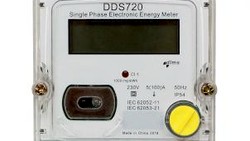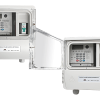Electrical installations can be dangerous if not handled properly, posing risks of severe injuries or even death. Therefore, it is crucial to prioritize personal safety when working with electrical installations.
Here are some basic rules:
- Avoid contact with energized electrical circuits.
- Treat all electrical devices as if they are live or energized.
- Disconnect the power source before servicing or repairing electrical equipment.
- Use only tools and equipment with non-conducting handles when working on electrical devices.
- Avoid using metallic pencils, rulers, or wearing rings or metal watchbands when working with electrical equipment.
- If necessary to handle equipment that is plugged in, ensure hands are dry and, when possible, wear non-conductive gloves, protective clothing, and shoes with insulated soles.
- Work with only one hand if it is safe to do so, keeping the other hand at your side or in your pocket, away from conductive material.
- Do not touch another person's equipment or electrical control devices unless instructed to do so.
- Enclose all electric contacts and conductors to prevent accidental contact.
- Avoid handling electrical equipment with wet hands, feet, or body, or when standing on a wet floor.
- When touching electrical equipment, use the back of your hand to minimize the risk of muscular contractions if accidental shock occurs.
- Be aware that interlocks on equipment may disconnect the high voltage source when a cabinet door is open, but power for control circuits may still be on.
- De-energize open experimental circuits and equipment if left unattended.
- Always use lockout/tagout procedures when working on electrical equipment to prevent accidental re-energization.
- Regularly inspect electrical cords and plugs for any signs of damage or wear, and replace them if necessary.
- Avoid overloading electrical circuits by using proper load calculations and distributing the load appropriately.
- Keep flammable materials, such as gasoline or solvents, away from electrical equipment or wiring to prevent potential fires.
- Use caution when working at heights near electrical installations to avoid the risk of electrical shock or falling.
- Be aware of potential electrical hazards in hazardous environments, such as explosive atmospheres, and follow specific safety guidelines for these environments.
Get Proper Training
Proper training is crucial when working with electrical installations. It equips individuals with the necessary knowledge and skills to handle electrical systems safely. Training should cover the hazards associated with electrical installations, the use of personal protective equipment (PPE), the proper use of tools, and the significance of following electrical codes and standards.
Takeaway
Personal safety is essential when working with electrical installations. Electrical installations can be dangerous, and it is essential to take appropriate safety measures to prevent injuries. These safety measures include knowing the hazards, using personal protective equipment, turning off the power, using the right tools, keeping the area clean and dry, following electrical codes and standards, and getting proper training. By following these safety measures, you can ensure that you work with electrical installations safely and prevent injuries.
Editor's note: This article was originally published in July 2019 and has been updated for comprehensiveness.





Compared to "No Touching" blog, this article talks about personal safety in more details from which one can get a quick and general understanding of electrical installations. It did broaden my physical background and pay some attention to these aspects, and I will read it again and again.
ISO-certified companies have regular security briefings. Especially experienced staff tend to pay not too much attention. So it's good to review the safety rules regularly.